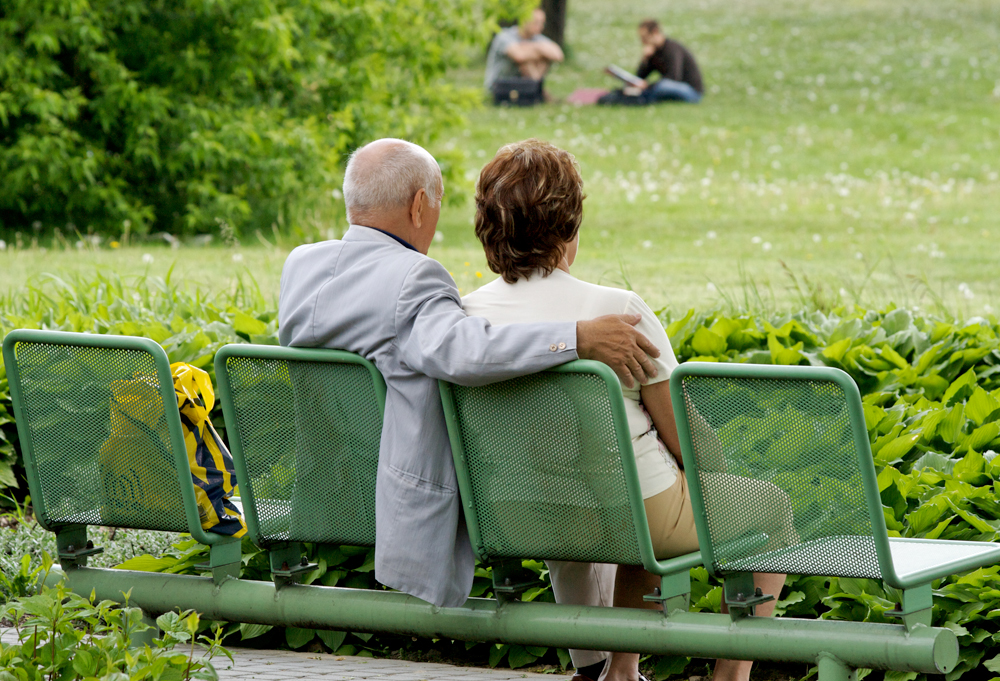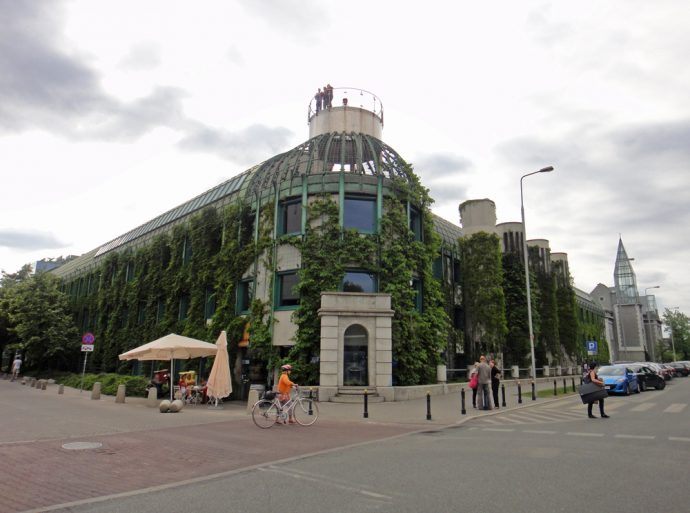Warsaw’s urban oasis: Irena Bajerska

As societies willingly or unwillingly adapt to inevitable urbanisation, population density often results in increasingly cramped living quarters and decreasing urban greenery. To balance the increased density of our cities, forward-thinking, human-centred design and architecture is becoming increasingly common.
Looking to the skies, the Warsaw University Library rooftop garden is hard to miss. The entire 17,000m2 rooftop is elegant and alive, covered in luscious greenery – an abundance of plant life uncommon to see in any part of the urbanised world, making it one of Europe’s largest rooftop gardens. Not only keeping pace with European counterparts’ high-calibre design and architecture, the Warsaw Library Garden is also enhancing and transforming the traditional, post-war landscape and heritage in the capital. Here, boundaries are reinterpreted into a modern poetic homage to Poland’s heritage, surrounding the glass roof and through the decadently large open windows. Cultivated atop the existing Library in 2002, the garden is situated in the heart of the old town, a contemporary breath of fresh air.

Responsible for this visual wonder is landscape architect Irena Bajerska, whose fascination with urbanisation and density inspired the solutions for her spatial work. Polish-born, and fluent in English, Russian, and German, her innovative approach to design can be traced back to a childhood spent in the hills of Beskid Śląski, where sandstone, mineral springs and nature were abundant. Now lecturing in architecture at the Warsaw University, she is a prominent forward-thinking figure in Poland’s emerging architecture. The garden shows a simplicity and sensitivity, enhancing what was already inherent in the architecture of the space from the glass ceiling to light-filled windows. It is a purposeful, functional and poetic example of sustainable design.
Ms. Bajerska is as fascinating as her practice, celebrating her 70th birthday this year. Here she provides insight on her design for the Warsaw Library Rooftop garden, an intriguing, green landmark in Poland’s capital, setting the standard in conceptual thinking for considered environments.
The garden on the top of the roof of the University library in Warsaw, (Biblioteki Uniwersytetu Warszawskiego – BUW) is one of the biggest rooftop gardens in central Europe. How did this project first come about, and how did you become involved?
The concept came from the building’s architects: Marka Budzynski and Zbigniew Badowski. The project was selected via an international competition in 1993. I was invited to take part in the competition by the directors of a private architectural practice in Poland called PARK. After winning the first prize, I began work straight away on the project.
What was the first idea for your construction of the Garden? Did you take inspiration from another existing architectural structure or architect?
My first initial thought and inspiration came from the current Director of the Botanical Gardens at the University of Warsaw, Hanna Werblan-Jakubie, who rejuvenated the institutional space. I came on board as the project for a rooftop garden was coordinated, to complement the Library building.
My first concept for the garden was to use Polish wild flowers, but in practice that would have been too expensive to establish and maintain. My next concept, due to the roof structure, was to make a group of individual gardens, each with distinct colours. For example, focusing on gold, silver, blue, green. We decided to divide the space into individual gardens, due to the roof being separated into different functional spaces.
The Rooftop Garden is divided into 4 sections. Was there a basis for criteria in your selection of plants? Was this based on sustainable, aesthetic, location or perhaps financial elements?
Selecting the right plants, I used the following criteria: to have resistant plants to the harsh climates in the sun, wind, frost, and those that require a small amount of water. The colour of the flowers and leaves, and their smell. Also, their frost resistance despite the garden being closed in winter months from November to April.
The garden is found over two levels, the Upper and Lower Garden, with a river stream alongside both. This water concept for the lower part was a combined project with the architects to use water coming down from the entry point on the roof. I suggested making a stream and water cascade system powered by the pumps to keep it as a closed continuous circulating system. The water in the garden holds a very important aesthetic and natural element in the garden.
There is an automatic sprinkler system for the roof garden and the vertical gardens that surround the building and streets, accompanied by a mobile irrigation system using public tap water.
Has any part of the garden construction changed since it was created, and have any challenges or constraints come to light over time?
The garden is 12 years old. It is a living organism that changes and evolves over time. However, the garden needs to be in harmony with our european climate. Initially, the rooftop garden was designed with 98 types of plants: perennials, ornamental grass, coniferous shrubs, evergreen shrubs and a variety of vines. However, due of the great cost and maintenance of creating the garden and its further care, the University decided to change the number of plant species used – bringing it to exactly 49 plants. Unfortunately most of the ornamental grass and perennials were removed, but the coniferous shrubs and various vines, alongside roses, chrysanthemum, fistulas and low silver leaf willows all remained.
Pani Irena, you have been involved with many projects. When you were young, did you hold an interest or fascination of plants or human-based architecture?
I was born in a small village Cisównica situated in the mountains of Beskid Śląski, It is located in the South of Poland, where we held a strong gardening tradition in the family. I was always surrounded by nature, and my interest and enjoyment for reading has also continued to this day. I was always curious about people and their surroundings and environment. When I was a student at high school I liked to draw, play the piano, and also enjoyed science and sport. When I finished school I knew what I wanted to do in my future; I wanted to draw and have a close contact with nature. That is why I have chosen to be an architect specialising in landscape.
Why was it important to establish a roof garden in the city of Warsaw?
Every garden on a rooftop has value for a central city. The beautiful landscape allows close contact to nature, including important visual and educational values. The BUW roof garden is unique in itself because it is a part of the Library Building and also combines a diverse range of varieties of plants giving so much visual delight. Cities can be overcrowded spaces, lacking in nature, and devoid of understanding and embrace for natural history. They can be an artificial environment unhealthy to residents’ physical and mental health. It is common for urban city dwellers to flee to the countryside or look for nature in their own environments. This is the main issue and local need that architects and landscape architects are trying to respond to.
Is there a particular feeling you would like visitors to experience while in the garden?
That’s a tough question, because the experience is different for those visiting the garden. A resident student regularly visiting would have a different view to a guest visiting for the first time, each person has different expectations. I would be delighted if each guest was so astonished and intrigued for the possibility of such grandeur of a rooftop garden on a building, that they would return again.
This interview is brought to you by our kindred collaborators Ala Champfest magazine, part of our ongoing partnership sharing local and international art, architecture, design and urbanism news, writing and food for thought. Many thanks to Champ editor Joanna Kawecki for this interview. Photos courtesy Champ Creative and CC-licensed flickr images via truu, Kim Davies, x-oph with the top feature image by Tomas Skorski.